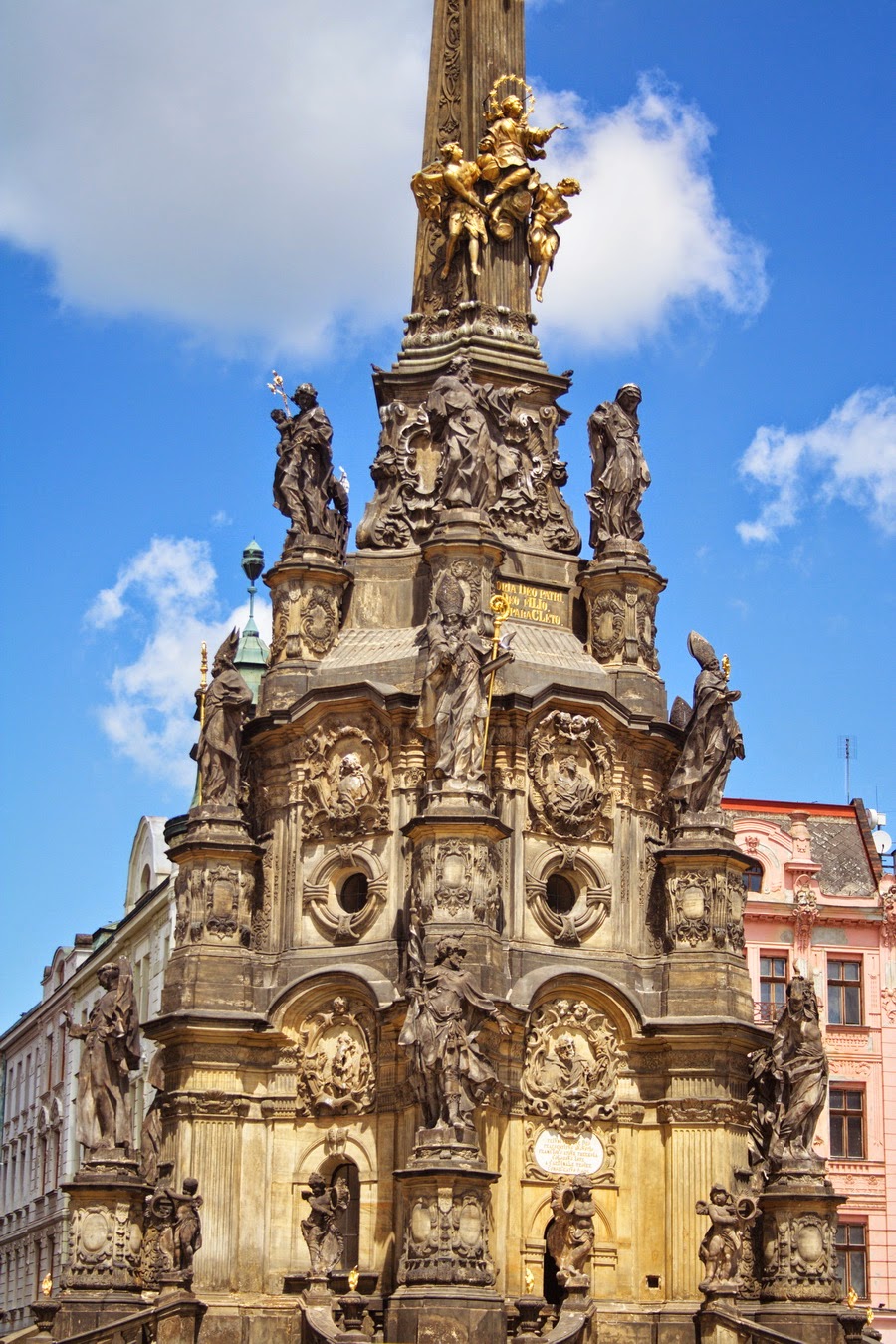 (top photo)
(top photo)May 25th, 2014, on the way we backed to Brno from Ostrava, we visited Olomouc in passing. I separated the photos into three articles. This is the first part of the three. Click here to read the Chinese version.
Olomouc
Olomouc is the fifth biggest city in Czech. It became more and more prosperous since 10th century and was once the capital of Moravia. Afterwards, the Thirty Years' War in 17th century made the city destroy seriously, and it was rebuilt in 18th century. The Holy Trinity Column is an important construction of the city and it was qualified as the World Heritage by UNESCO in 2000.
Photo 01
 |
| The street scene of Olomouc. |
The Holy Trinity Column
The Holy Trinity Column is in Horni Square. Its height is 35 metres and also the biggest Baroque carved statue in mid-Europe. In 1716, the local craftsman Wenzl Render took the initiative of building this column. Eventually, it took 38 years to accomplish in 1745 and Wenzl didn't see it finished because he died in 1733.
The top of the column is the statue of holy trinity, the middle part is the ascension of Mary, and two parts were made by bronze plated with gold. The Baroque style here is not exaggeration, but a kind of natural, vivid and harmonic example. A very small chapel is in bottom part of the column and visitors could enter and sign inside.
Photo 02
 |
| The Holy Trinity Column in Horni Square. |
Photo 03
 |
| Top, the Holy Trinity and mid-part, Mary. |
Photo 04
 |
| The bottom part of the column. |
Photo 05
 |
| A very vivid sculpture. |
Fountain
Besides the Holy Trinity Column, many fountains are around Horni Square. In 17th and 18th centuries, many cities and towns in Moravia built many fountains for beautification and conveniences for drinking. When water supply system got modernized, these fountains were torn down one by one. Except for Olomouc, residents here tried to keep it completely. Today, the fountains became distinguishing features of the spot. There are seven fountains on the Square. Except one was built in 2002, the other six were constructed in Baroque period. These seven are: Caesar Fountain (1725), Arion Fountain (2002), Neptune Fountain (1683), Jupiter Fountain (1735), Triton Fountain (1709), Mercury Fountain (1727), Hercules Fountain (1688). The following are two of them:
Photo 06
 |
| The Hercules Fountain. |
Photo 07
 |
| The Caesar Fountain. |
Astronomical Clock
There is also an astronomical clock in Olomouc but it is totally different with the one in Prague. Because of the replacement of dynasties in history, it experienced several times of modification. When first finished in 1474, it was late Gothic style. After hundred years, it was practiced a modification. Until the Baroque period, it was modified to Baroque style, and was remodified to Neo Gothic style. The last time was after World War II, on one hand it was broken seriously during the War, on the other hand Czech became a communistic nation, all figures in the clock were replaced by proletarian labourers. At 12 o'clock every noon, it will knock 12 beats, music starts to sing and labourers starts to work for near to 10 minutes. Very interesting!
Photo 08
 |
| The Astronomical Clock in Olomouc. |
Photo 09
 |
| The proletarian astronomical clock. |
St. Wenceslas Cathedral
St. Wenceslas Cathedral was built in 1311 but was ruined in a big fire. During 1883-1892, it was rebuilt and face the world in New Gothic architecture. Two towers are the highest ones in Moravia, also the second highest towers in Czech.
Photo 10
 |
| The magnificent St. Wenceslas Cathedral. |
Photo 11
 |
| Sculptures. |
Photo 12
 |
| St. Wenceslas Cathedral. |
Photo 13
 |
| Sculptures on the gate. |
Photo 14
 |
| Beautiful church windows. |
Photo 15
 |
| Inside the cathedral. |
Photo 16
 |
| The altar. |
No comments:
Post a Comment